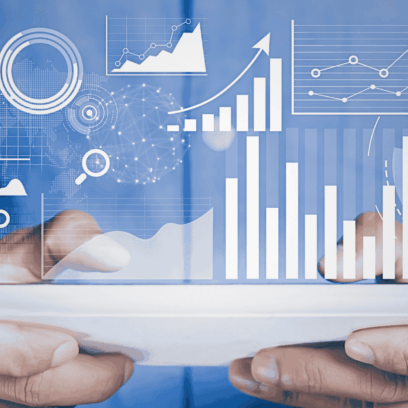Carbon Insetting vs. Offsetting


🌍 Carbon markets can feel overwhelming—fragmented data, limited transparency, and conflicting advice make it hard to know where to start. In this webinar, our experts give a clear, practical introduction to the VCM.
Understanding the difference between carbon insets and offsets is essential when developing your carbon strategy.
Are you in the process of developing or implementing a strategy to reduce your company’s carbon footprint? Understanding the difference between carbon insetting and offsetting and how they can work together is essential to any carbon strategy and sustainability roadmap. While the concept of offsetting is widely recognized, insetting remains less defined and often misunderstood. Yet, it holds transformative potential for embedding sustainability into the core of business operations. In this article, we’ll share some of the pros and cons of each approach and how you can best navigate these options based on the level of cost and resources involved to equip you with the insights needed to make informed decisions that balance immediate environmental needs with sustainable, long-term planning.
Understanding Carbon Insetting vs. Offsetting
- Carbon Insetting: While less defined, insetting, a term originally coined by Plan Vivo, refers to investments in emissions reductions within a company’s own value chain. It’s about improving processes, supply chains, and operations to primarily reduce emissions from operations that fall under Scope 3, such as emissions from the production of goods and services bought by the company, the life-cycle of long-term goods, or the operation of investments not owned or controlled by the reporting company.
- Carbon Offsetting: In simple terms, offsetting involves compensating for your unavoidable emissions by funding equivalent carbon dioxide (CO₂) or greenhouse gas emissions (GHGs) saving projects elsewhere. This can be through renewable energy projects, reforestation, or other methods that absorb GHGs. Generally, each carbon offset credit represents one metric ton of CO₂, or its equivalent GHG.
| Insetting | Offsetting |
| Improvements within the value chain | External projects |
| Long-term strategy | Immediate impact |
| Requires deeper commitment and planning | Easier to implement |
| Can mitigate operational risk (improving supply chain resilience) | Can increase reputational risk (without thorough due diligence) |
| Contributes to Scope 3 emissions reductions | Does not directly reduce operational emissions |
The primary difference between carbon offsets and insets lies in the focus of the investment. Offsetting involves external projects which are not directly related to a company’s operations, whereas insetting focuses on improvements directly related to the company’s products and services. Note, while carbon offsetting does not reflect a direct operational reduction, companies may seek to choose carbon credits which are in the same geographic region as its operational footprint or projects with co-benefits that are meaningful to its sustainable development goals (SDGs). As a mechanism to primarily reduce Scope 3 emissions, insetting typically focuses on a company’s value chain rather than directly at a corporation’s facility.

Ready to Talk About Your Sustainability Goals?
Get tailored sustainability solutions that meet your business’s unique needs. CarbonBetter delivers tomorrow’s climate solutions—today. Contact Pankaj Tanwar, Managing Director of Climate Services, to get started.
Not ready yet? Read our client stories to see what it’s like to work with us.
Why Your Carbon Strategy Matters Now More Than Ever
It might feel like everyone is talking about carbon strategies right now, and for good reason. Decarbonization goals for 2030 and 2050 are fast coming around the corner. Any claims made by your organization must be supported by science-backed, quantifiable metrics to avoid missing targets or being called out for greenwashing. A specific, measurable, achievable, relevant, and time-based (SMART) sustainability roadmap and integrated carbon strategy is vital for everything from compliance and reputation to future-proofing your value chain.
“The primary difference between carbon offsets and insets lies in the focus of the investment. Offsetting involves external projects which are not directly related to a company’s operations, whereas insetting focuses on improvements directly related to the company’s products and services.”
Nicole Sullivan, former Director of Climate Services

Voluntary Carbon Market Clarity: Making Sense of the Trends
In this webinar, we provide an overview of the current state of the VCM, including both challenges and why it’s an essential tool for businesses on the path to decarbonization. We will explore the significant drop in carbon prices over the last year, why price per tonne can vary significantly across registries and technologies, how to assess quality of a carbon credit, removals vs avoidance credits, and more.
Insetting & Offsetting Considerations
When considering carbon insetting and offsetting strategies, it’s crucial to take into consideration all aspects that can significantly influence a business’s decision-making process. These strategies not only impact your carbon footprint but also have profound implications on local communities, supply chains, and brand perception.
Impact on Local Communities
Carbon offsetting projects, especially those involving nature-based solutions like reforestation or conservation, can have a substantial impact on local communities. It’s essential to ensure that these projects are developed in harmony with local needs and priorities. For instance, a project that restricts access to traditional lands or resources for the sake of carbon sequestration can lead to community backlash and reputational damage. Conversely, well-planned projects can provide local employment, enhance biodiversity, and improve community resilience against climate impacts.
Insetting, by focusing on improvements within a company’s own value chain, also affects local communities—particularly those involved in the supply chain. By investing in cleaner technologies or more sustainable practices, businesses can positively impact the health and well-being of these communities, while simultaneously directly improving the impact of its product and/or operations. For example, reducing emissions in a manufacturing process may also reduce local pollution, thereby improving the air quality and quality of life for nearby residents.
Influence on Supply Chains
Insetting initiatives often lead to more sustainable supply chain practices. By focusing on reducing emissions within the supply chain, companies can encourage suppliers to adopt greener practices, which can lead to a ripple effect of sustainability improvements across the industry. This approach not only reduces Scope 3 emissions for the company insetting but also can lead to more resilient and efficient supply chains, as suppliers innovate to meet these new standards.
On the other hand, carbon offsetting, while not directly influencing a company’s immediate supply chain, can still play a role in supply chain sustainability. By investing in carbon offset projects that align with the company’s supply chain regions and operating footprint, businesses can contribute to environmental and social improvements in those areas, indirectly supporting a more sustainable supply chain ecosystem.
Brand Perception and Reputation
The way a company approaches carbon insetting and offsetting can significantly influence its brand perception. A transparent, well-thought-out strategy that demonstrates a genuine commitment to sustainability can enhance a company’s reputation. However, a poorly executed strategy, especially one that appears to be more about greenwashing than actual environmental impact, can quickly lead to negative public perception.
Insetting, due to its direct impact within a company’s value chain, can be seen as a more authentic and committed approach to sustainability, enhancing brand reputation. Offsetting is an important tool as well and can be utilized in tandem with insetting, particularly in cases where a business is seeking to urgently take action and insetting will take time and planning and collaboration with suppliers. Accurate measurement and careful due diligence for quality criteria such as additionality are crucial considerations for both insetting and offsetting.
While both insetting and offsetting are vital tools in a company’s carbon strategy, understanding their broader implications on local communities, supply chains, and brand perception is crucial. By considering these factors, businesses can make more informed decisions that not only contribute to their sustainability goals but also support their broader social and economic objectives.
What’s Right for Your Business?
To determine the best approach for your business:
- Evaluate Your Current Carbon Footprint: Understand where most emissions come from.
- Consider Your Resources: Do you have the capacity for long-term projects (insetting) or need immediate solutions (offsetting)?
- Align with Business Goals: Choose a strategy that complements your business objectives.
- Plan for the Long Term: While offsets provide immediate solutions, insets are about sustainable practices and long-term planning.
Insetting and offsetting can and should be used together to build a comprehensive and effective sustainability plan—offsetting the unavoidable emissions in your supply chain once you have done everything possible to reduce emissions in your own value chain.
While the value of offsets can be more immediate, and insetting can take more long term planning, both are beneficial in meeting net zero and decarbonization targets.
Conclusion
Making informed, strategic decisions for a sustainable future is essential to drive long-term impact. If your organization is looking to decarbonize, we can help. Our minority-owned consulting firm specializes in helping companies deliver solutions in service of nature, climate, and community. Whether you are looking to procure carbon offset credits or choose a portfolio pre-selected and vetted by our team, we can help you from selection to reporting. Contact us here to find out more.
The key difference lies in where the carbon reduction activities take place. Carbon offsetting involves investing in environmental projects outside of your company's operations to compensate for your unavoidable emissions. These projects can include renewable energy, reforestation, or other GHG absorption initiatives. In contrast, carbon insetting focuses on reducing emissions within your own company's value chain. This means making improvements in your processes, supply chains, and operations to primarily reduce emissions linked to your business activities, particularly those under Scope 3 emissions.
Carbon offset projects, especially nature-based ones, can significantly impact local communities. It's important that these projects are aligned with local needs, offering benefits like employment and biodiversity enhancement. Insetting, by improving sustainability within your value chain, can also positively impact communities involved in your supply chain, such as through reduced local pollution and improved living conditions. Both strategies, when executed thoughtfully, can contribute to community well-being and resilience.
Yes. Insetting encourages sustainable practices within your supply chain, leading to a reduction in Scope 3 emissions. This approach can prompt suppliers to adopt greener methods, creating a sustainability ripple effect. While offsetting doesn't directly influence your immediate supply chain, choosing projects in regions related to your supply chain can indirectly support environmental and social improvements there, contributing to a more sustainable supply chain ecosystem.
To ensure credibility, invest in certified offset projects that are verified by reputable standards like the Gold Standard or Verified Carbon Standard (VCS). These projects are audited and monitored for their actual impact. Additionally, look for projects that provide co-benefits such as biodiversity conservation or community development. Transparency in reporting and regular updates on the project's progress are also key indicators of a credible investment.
Insetting tends to be more effective in industries with significant supply chain or operational emissions, like manufacturing, agriculture, or retail. These sectors can often find ways to reduce emissions directly through changes in their processes or supply chains. Offsetting, on the other hand, might be more suitable for industries with less direct control over their emissions, such as service-based industries or small businesses with limited influence over their supply chains. However, a combination of both strategies is often the most effective approach for any industry.

About the Author
Pankaj Tanwar is Managing Director of Climate Services at CarbonBetter. He has experience leading Fortune 100 companies through their sustainability journeys, including sustainability driven growth in the food industry. Pankaj holds an MBA from Northwestern University’s Kellogg School of Management and a BTech in Mechanical Engineering from the Indian Institute of Technology, Kanpur.





